WD/RE Flying Flea 1942, Wilkinson TMC Series V 1912, Quasar 1980 are prominent names in the UK's National Motor Museum.
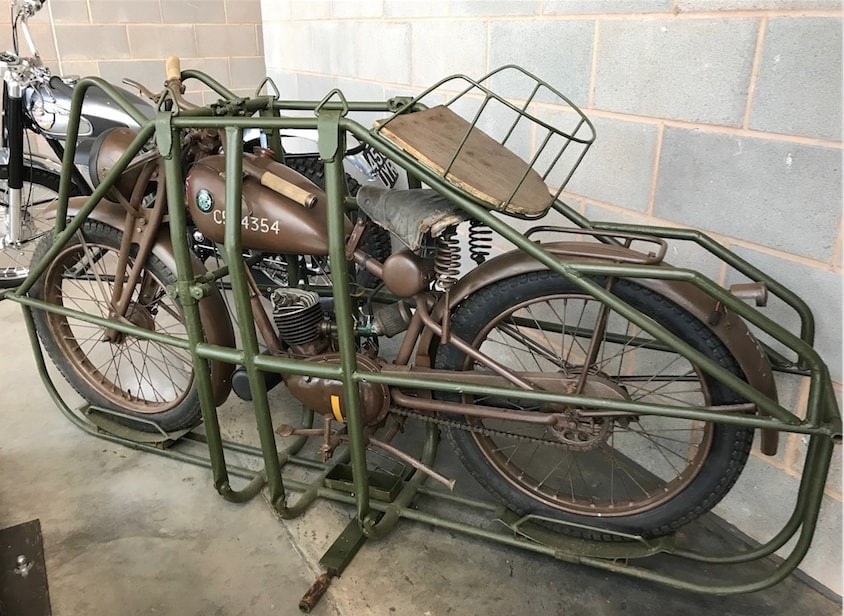 |
| WD/RE Flying Flea 1942 by Royal Enfield:The model was produced from 1942 to 1944, with a military design and was often used by paratroopers. The vehicle had a 2-stroke, 125cc engine. During World War II, the vehicle was covered with a steel frame and parachuted to the ground. After that, the soldier could remove the frame and use the vehicle. The Flying Flea 1942 allowed movement on complex terrain. The front beam of the vehicle was tied with thick elastic bands. |
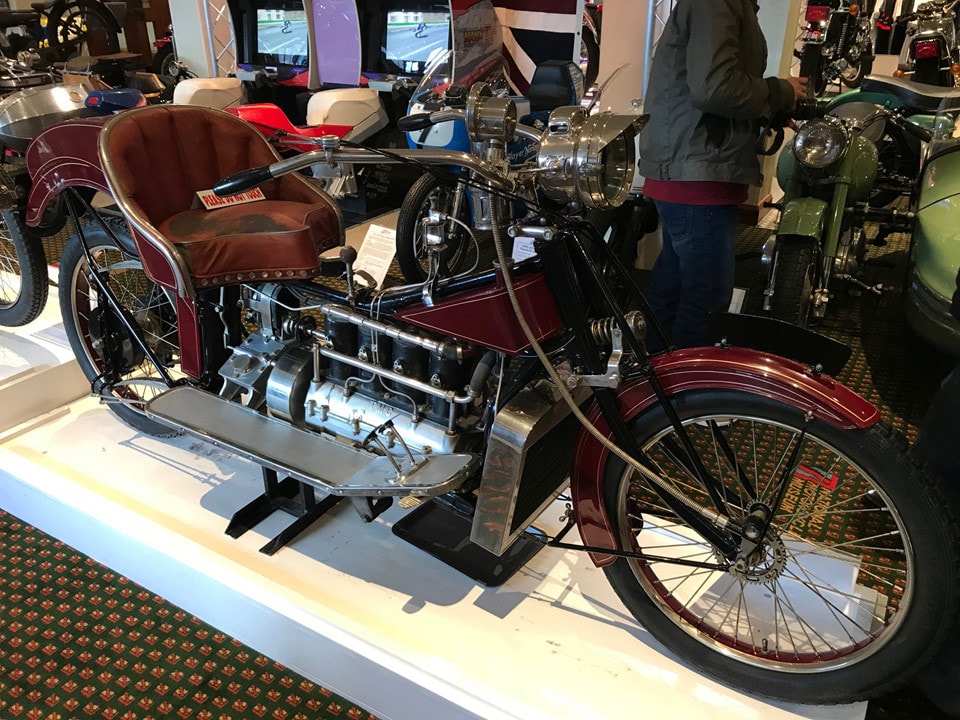 |
| Wilkinson TMC Series V 1912:The car has a luxurious, two-wheeled appearance. It has an 848cc water-cooled engine, the radiator is located behind the front wheel. The left pedal controls the clutch, the other two on the right are for the front and rear brakes. The right handlebar controls the speed, the gearshift lever is located in front of the seat. There is also a button for the oil pump and the engine. Of the 250 cars produced, only 6 still exist. |
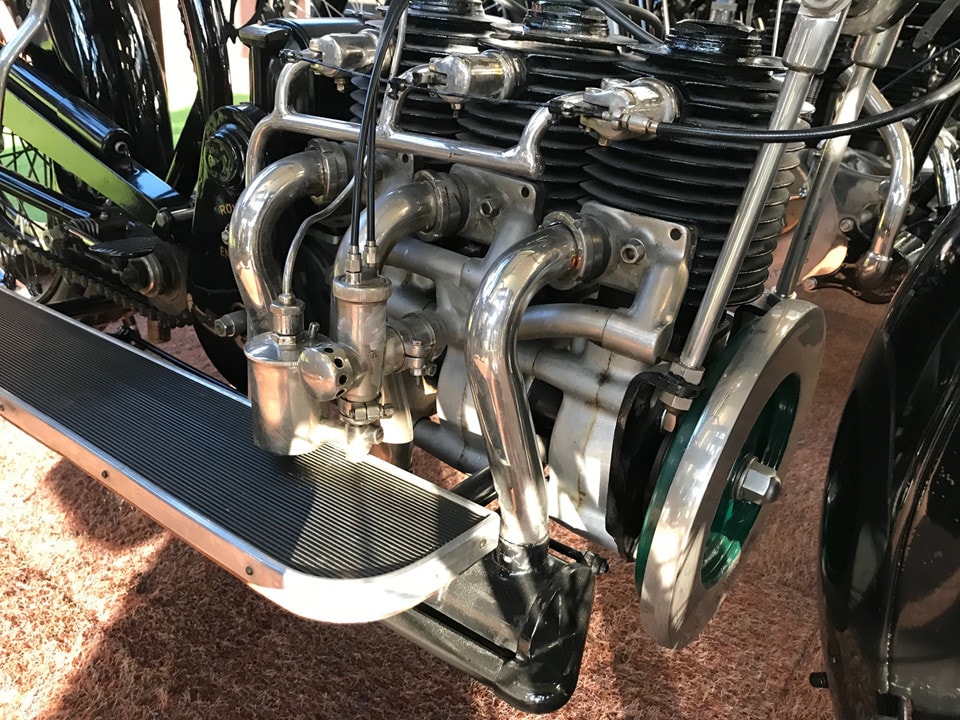 |
| Royal Enfield 1915 3-Cylinder 2-Stroke:This was the first 2-stroke 3-cylinder produced. The vehicle had a top speed of 80 km/h and a fuel consumption of 6.7 l/100 km. |
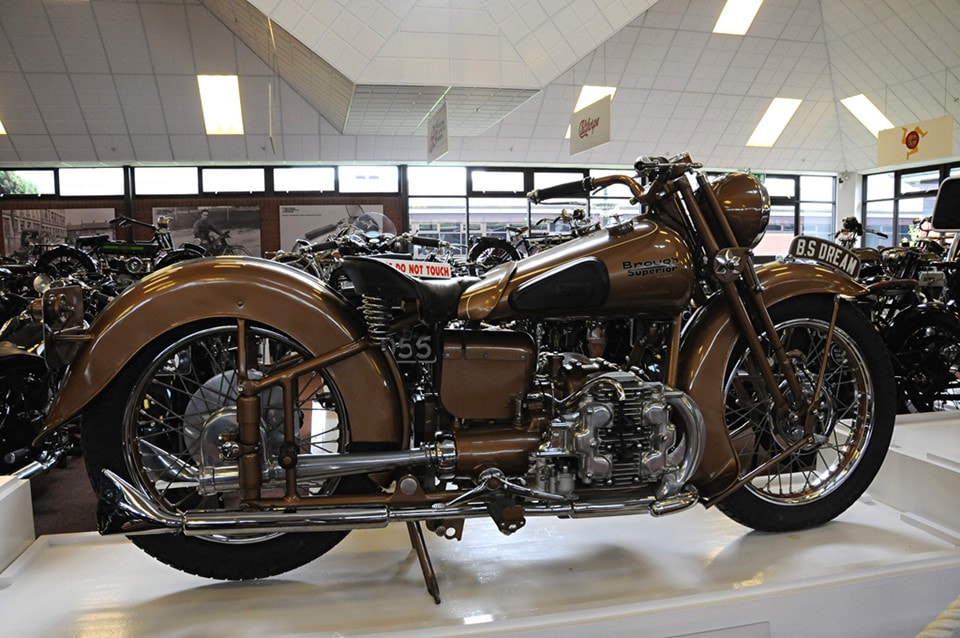 |
| Brough Superior Golden Dream 1939:The bike has a 4-stroke, 1,000cc engine, 2 cylinders placed symmetrically connected by a camshaft. The bike has a radiator and a shark fin exhaust. With its distinctive yellow color, this is the last Brough Superior. But in 1939, the war broke out and production had to stop, so the company only released 5 cars. |
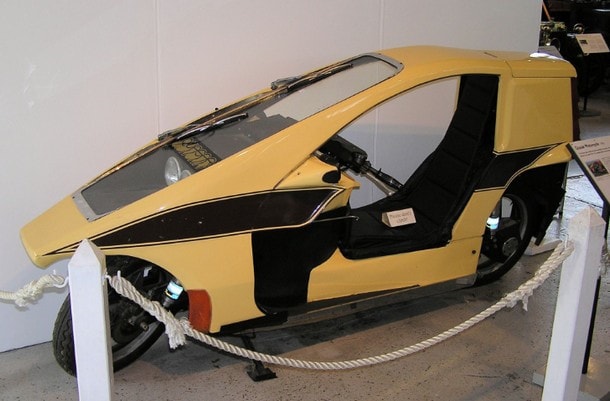 |
| Quasar 1980:A semi-enclosed motorcycle, built by Malcolm Newell and Ken Leaman in the 1970s. It has a Reliant Motors 848cc engine, and can reach speeds of up to 160 km/h. The front has a laminated windshield, wipers, and a heater. Because it is semi-enclosed, it creates large blind spots, forcing the rider to lean out. Only 21 1980 Quasars were produced. |
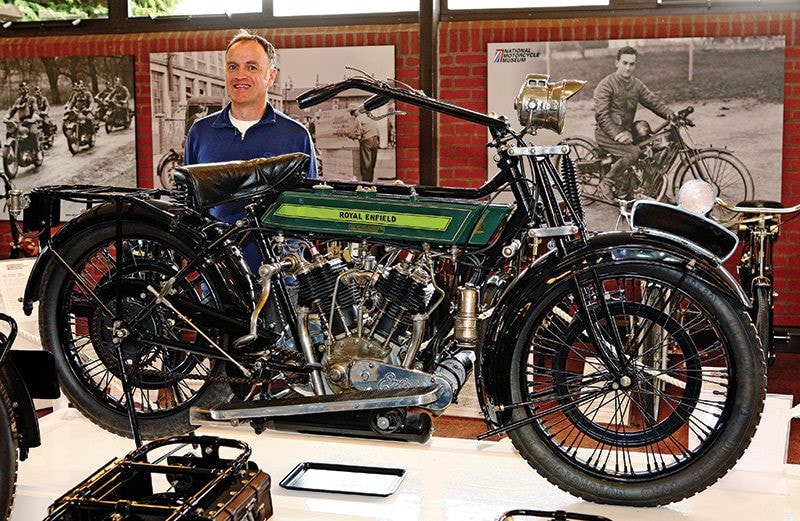 |
| Royal Enfield 1922 V-Twin:The 1922 V-Twin was a favorite among men because it was comfortable, powerful, affordable, and rode well. The engine made 6 to 8 horsepower, but the bike had only one brake, operated by the left foot. The pedal pulled a cable up to the lever and pushed the V-brake into a longitudinal groove on the wheel. |
 |
| Brough Superior Austin Four 1932:The 1932 Austin Four had a 797cc, 4-cylinder Austin Seven engine and transmission. Instead of designing a new transmission, George Brough retained the mid-engine shaft, with a central splitter driving the rear wheels. The car debuted at the 1931 Olympia Motorcycle Show in London. It was considered a British standard car because of its smaller 24-inch wheels. The company only produced 10. |
 |
| Royal Enfield with hand painted fuel tank and wheel rims:In 1932, all Royal Enfield fuel tanks and wheel rims were hand painted. At that time, the company produced over 825,000 bikes and 950,000 the following year. |
 |
| Pegasus Norton Motorcycle:The car has a Norton 828cc engine, 350 horsepower. There are also 2 Shorrock turbochargers, 2-speed transmission. The car uses 75% nitromethane and 25% methanol, fuel consumption is 6 gpm. Brits Derek Shinn and Ian Messenger designed and built this car. It won many awards in Europe before disappearing in the early 1980s. |
 |
| Clyno with gun and V-Twin sidecar 1914-1918:Used in World War I, but not suited to the terrain of northern England, it was actually a development of the civilian 1915 Clyno. |
According to Zing











